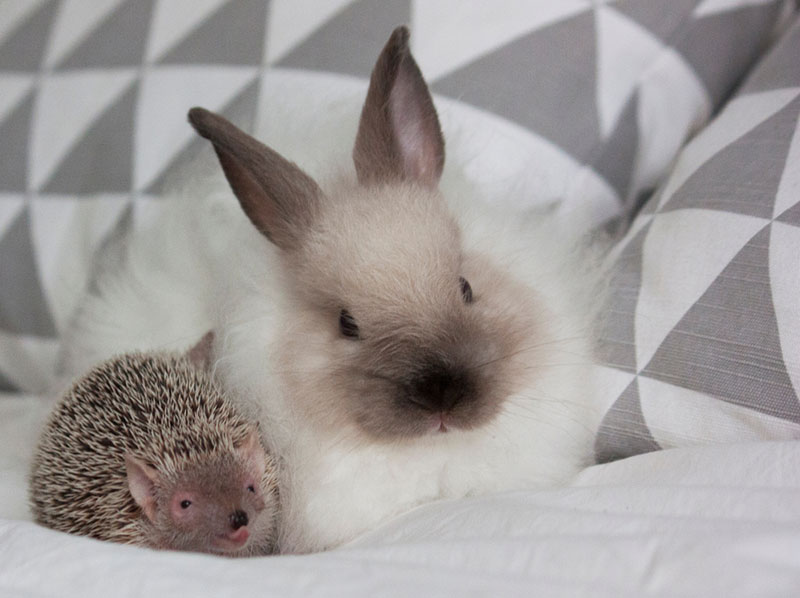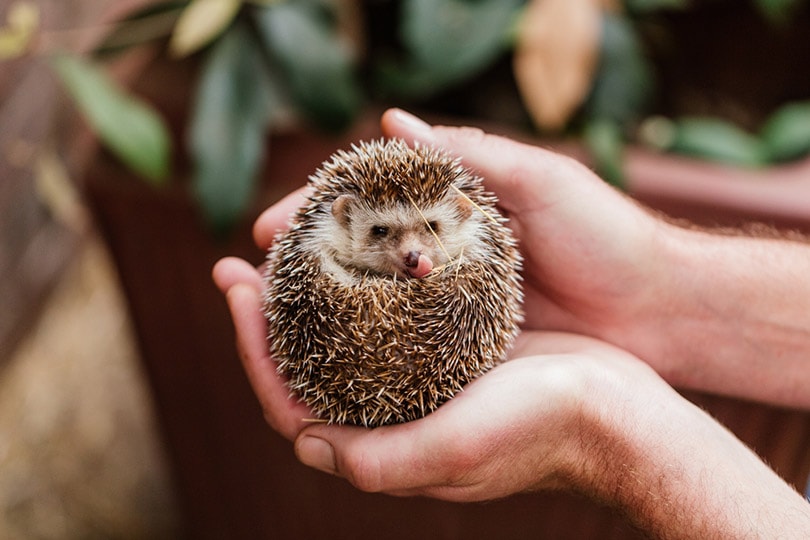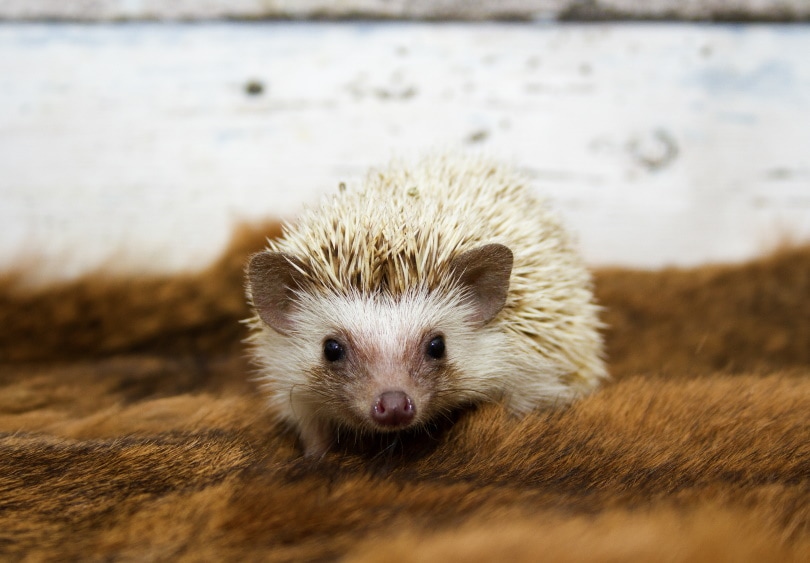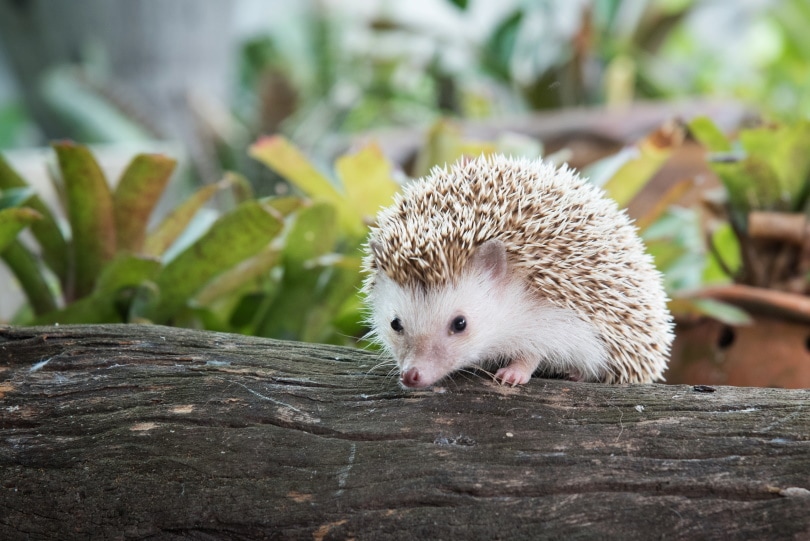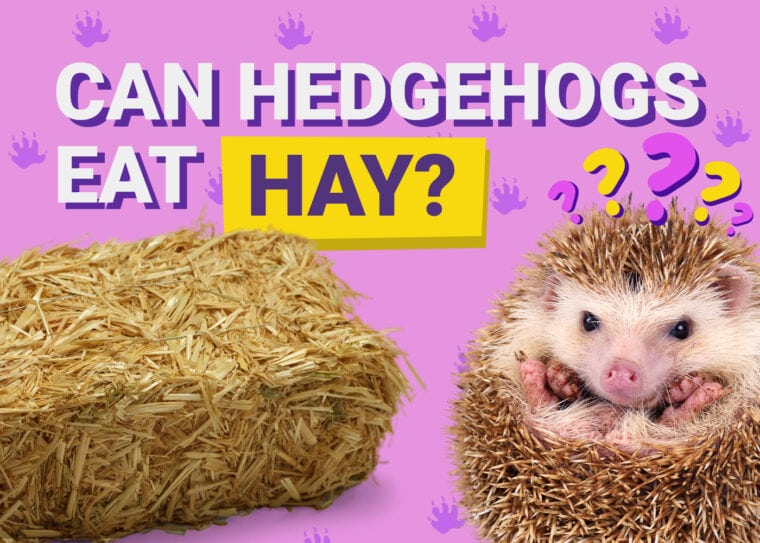
Hedgehogs are cute and spiky little things with a unique diet. Hedgehogs are insectivores and omnivores meaning they’ll eat insects, meat, and plant matter. So, if they’ll eat plant material, they must sometimes eat hay, right? Wrong.
You shouldn’t feed your hedgehog hay as it doesn’t provide any nutritional value to your pet. Keep reading to learn everything you need to know about hedgehogs and their relationship with hay.
Can Hedgehogs Eat Hay?
Hedgehogs don’t and shouldn’t eat hay. They need protein, fiber, carbohydrates, fats, minerals, vitamins, and, of course, water in their diet. Protein and fat are the most important of these nutrients.
The ideal hedgehog diet would consist of at least 20% protein sources and 10–15% fat. Hay is not able to provide these essential nutrients your hedgehog needs to thrive.

What Do Hedgehogs Eat?
The hedgehog diet is an interesting one. In the wild, they are opportunistic eaters. They feed on insects, frogs, snakes, mice, bird eggs, and fallen fruit. They mostly like to munch on invertebrates like worms, slugs, caterpillars, earwigs, and beetles.
A pet hedgehog will have a slightly different diet. Most pet hedgehogs will get the nutrition they need from a manufactured hedgehog or cat food. The problem with hedgehog-specific food is that it’s difficult to find high-quality versions that aren’t full of filler ingredients. Anecdotally most breeders recommend you choose cat food to be the staple of your pet’s diet.
Aside from cat food, there are other snacks you can offer your hedgehog. They are one of the few creatures that can digest insect chitin. Chitin is a protein source found in the exoskeleton of insects. It provides a dose of fiber and is a great source of nutrition for your hedgie. Gut loaded mealworms, crickets, and waxworms all provide a source of chitin, vitamins and minerals.
Fruits like apples, strawberries, bananas, and blueberries are great once-in-a-while snacks. Make sure to remove any skin on the fruit before offering them.
Hedgehogs sometimes have a difficult time digesting vegetable fiber. Their digestive systems can handle a little bit, so you can offer vegetables as snacks or cook the veggies beforehand. Carrots, sweet potatoes, squash, and peppers are all fine as occasional treats. Obesity is common in pet hedgehogs and care should be taken to avoid this.

Can Hedgehogs Have Hay Bedding?
The bedding you choose to use in your hedgehog’s cage is going to be around your pet all day long. They’ll be touching it, breathing it in, and some might even nibble on it. If you don’t choose healthy and safe bedding, you could be putting your hedgehog at risk.
Most people choose to use shredded paper bedding in their hedgehog cage as it’s soft, absorbent, and not dusty.
Others like to use wood shavings like aspen or pine. Aspen seems to be among the most common as it’s absorbent and has a nice scent. The problem with wood shavings is that they can be dusty and sticky.
You must avoid cedar bedding at all costs. There are several toxins in cedar shavings that can cause problems for your pet. The most common issue seen with cedar shavings is respiratory problems. Hedgies can easily develop respiratory infections, so it’s best to stay away from cedar at all costs.
Some folks like to use fabric bedding as it is less likely to harbor mites, and there are no wood splinters or dust to contend with. Fabric is a much more economical option as it can be washed and reused, but loose threads can pose serious risks to hedgehogs’ tiny toes. If the fabric fibers were to wrap around your pets’ toes or feet, it could cause permanent damage and even lead to amputation.
So, what about hay, then? Is hay a safe bedding option?
It depends on the source you’re getting your information from. Some folks say that hay is a great option to have in hedgehog cages as they like to nest in it but they don’t recommend using hay as the primary source of bedding. Others say that hay is too pokey and can get tangled in your pet’s feet and toes.
If you wish to try hay for nesting or bedding material, choose options packaged from the pet store. Large hay bales from your local farmer might be more affordable, but if those bales haven’t been treated, they could contain things that might make your hedgie sick.
Final Thoughts
There are a lot of food options you can offer to your hedgehog at mealtime. Hay shouldn’t be one of them. While it might be okay to put hay in his cage as burrowing material, hay provides zero nutritional value. Instead, choose a high-quality cat food kibble to make up the bulk of his diet. Offer occasional treats in the form of fruits, veggies, and insects, and you’ll have a happy and healthy hedgehog.
- See Also: Can Dogs Eat Hay?



